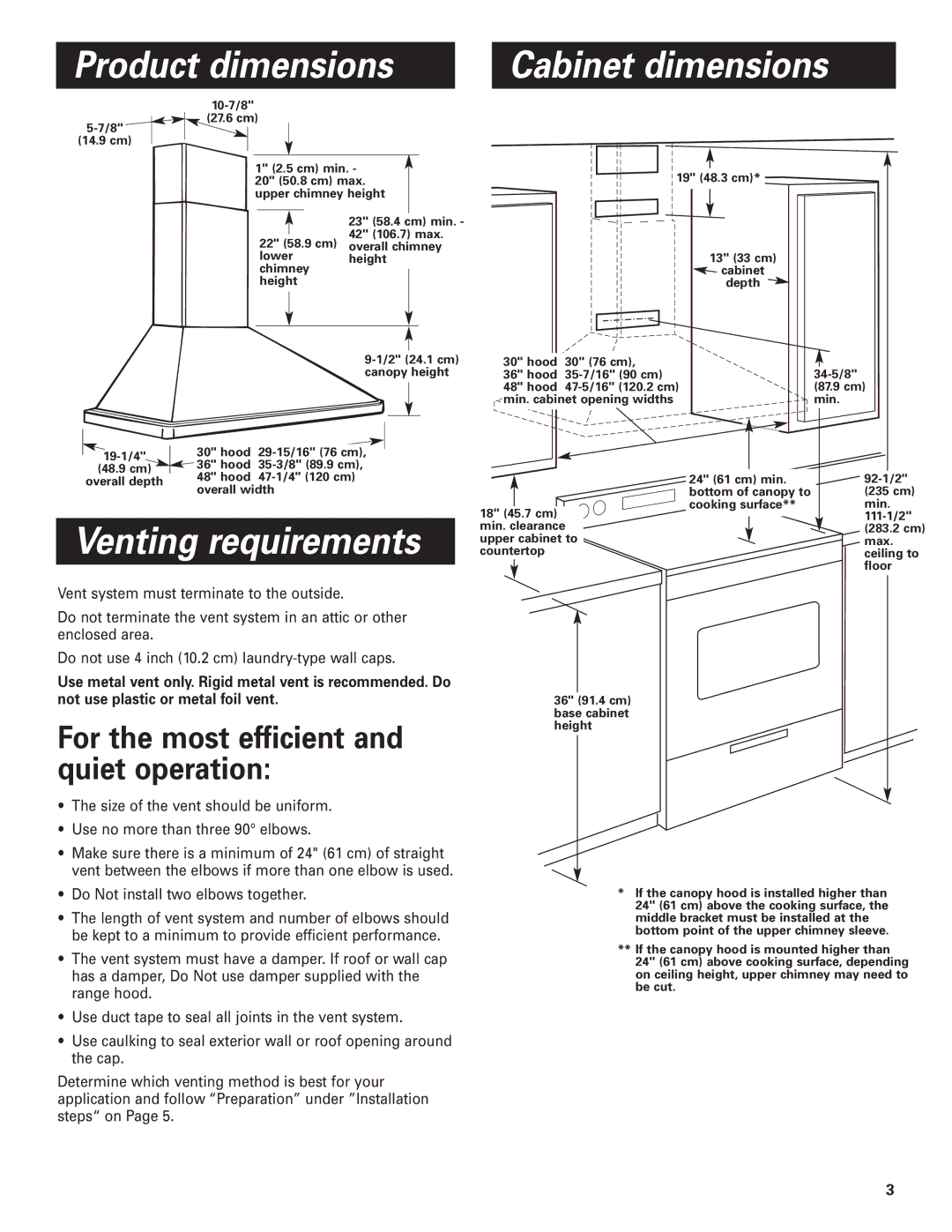
Product dimensions
Cabinet dimensions
(14.9 cm)
(27.6 cm)
1" (2.5 cm) min. - 20" (50.8 cm) max. upper chimney height
23" (58.4 cm) min. -
42" (106.7) max. 22" (58.9 cm) overall chimney
lower height chimney
height
19" (48.3 cm)*
13" (33 cm) ![]() cabinet
cabinet
depth
(48.9 cm) ![]()
overall depth
30" hood
30" hood 30" (76 cm),
36" hood
24" (61 cm) min. bottom of canopy to cooking surface**
(87.9 cm) min.
(235 cm) min.
Venting requirements
Vent system must terminate to the outside.
Do not terminate the vent system in an attic or other enclosed area.
Do not use 4 inch (10.2 cm)
Use metal vent only. Rigid metal vent is recommended. Do not use plastic or metal foil vent.
For the most efficient and quiet operation:
18" (45.7 cm) min. clearance upper cabinet to countertop
36" (91.4 cm) base cabinet height
(283.2 cm) max. ceiling to floor
•The size of the vent should be uniform.
•Use no more than three 90° elbows.
•Make sure there is a minimum of 24" (61 cm) of straight vent between the elbows if more than one elbow is used.
•Do Not install two elbows together.
•The length of vent system and number of elbows should be kept to a minimum to provide efficient performance.
•The vent system must have a damper. If roof or wall cap has a damper, Do Not use damper supplied with the range hood.
•Use duct tape to seal all joints in the vent system.
•Use caulking to seal exterior wall or roof opening around the cap.
Determine which venting method is best for your application and follow “Preparation” under ”Installation steps“ on Page 5.
*If the canopy hood is installed higher than 24" (61 cm) above the cooking surface, the middle bracket must be installed at the bottom point of the upper chimney sleeve.
**If the canopy hood is mounted higher than 24" (61 cm) above cooking surface, depending on ceiling height, upper chimney may need to be cut.
3
